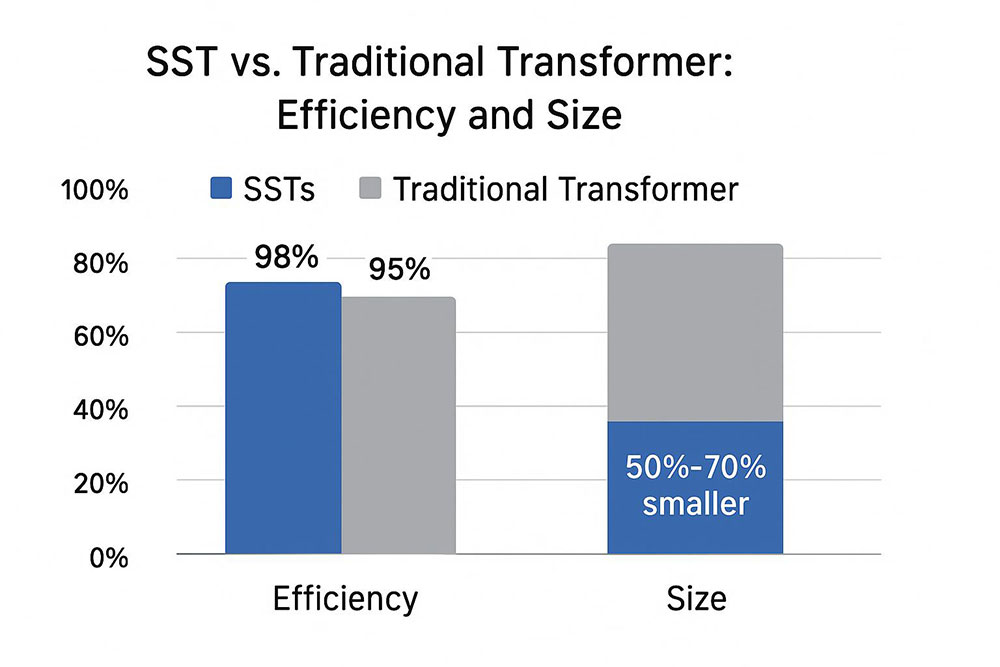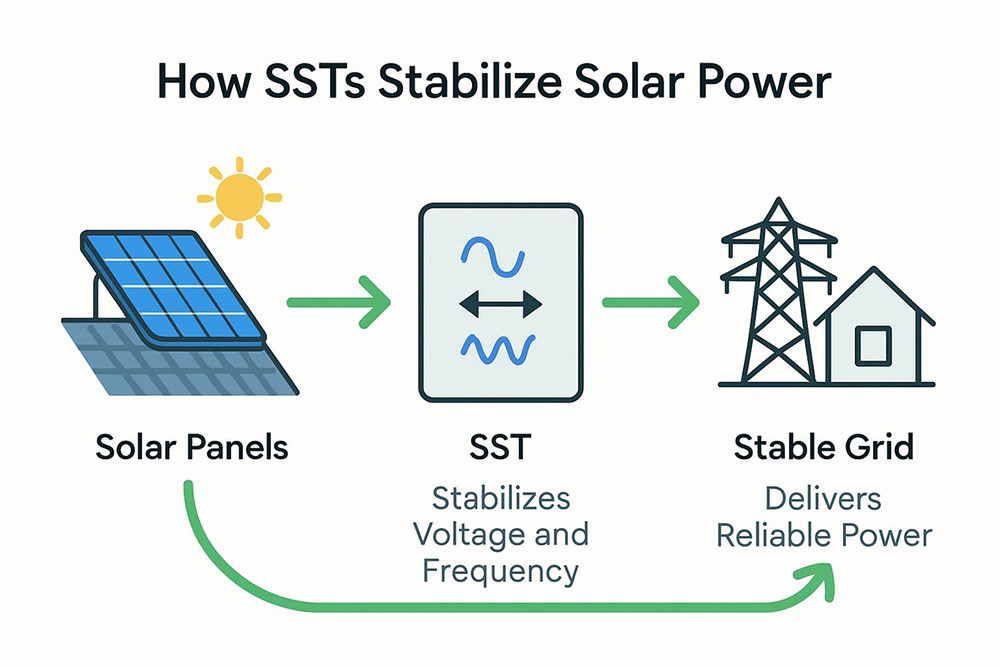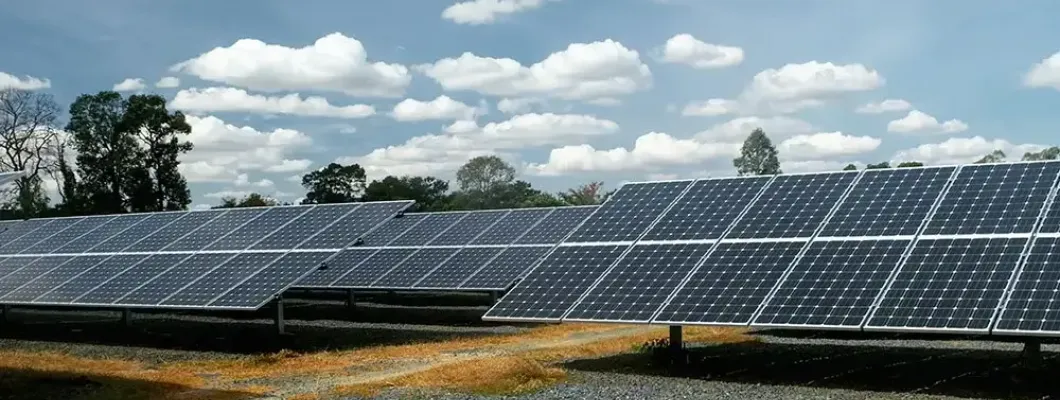Ever installed rooftop solar panels, only to get annoyed when your system keeps tripping off or your power output feels like a rollercoaster? You’re not alone. Solar power’s awesome, but tying it to the grid can be a pain—think voltage swings or random disconnects. Enter the solid-state transformer (SST), the unsung hero that’s like a smart butler for your grid, smoothing out the chaos and making solar grid integration a breeze. In this article, we’ll dive into what SSTs are, how they supercharge your photovoltaic system, and why they’re poised to change the renewable energy game. Got solar grid woes? Share your biggest frustration in the comments below!
What Are Solid-State Transformers? How Do They Stack Up Against Old-School Transformers?
Let’s break it down. Traditional transformers—those chunky boxes you see on power poles—have been around forever. They use iron cores and copper windings to step voltage up or down, but they’re not built for today’s renewable energy world. Here’s why they’re struggling:
- Bulky and heavy: They take up space and weigh a ton, a hassle for modern, compact energy systems.
- Not super efficient: They hit about 95% efficiency, meaning 5% of your solar energy gets lost as heat, per the U.S. Department of Energy.
- Stiff as a board: They can’t quickly adjust to the wild swings in voltage or frequency that come with solar power’s ups and downs (like when clouds roll in).
Now, meet the solid-state transformer (SST), the high-tech cousin that’s shaking things up. Instead of clunky iron cores, SSTs use power electronics like silicon carbide (SiC) devices to manage energy flow. Here’s what makes them stand out:
- Super efficient: SSTs hit ~98% efficiency, cutting energy losses by 3%–5% compared to traditional transformers (U.S. DOE, 2020).
- Compact and light: They’re 50%–70% smaller, perfect for urban solar setups.
- Smart and flexible: They respond in milliseconds to adjust voltage or frequency and support two-way power flow—great for feeding solar energy into the grid or pulling power for battery storage or EV charging.

How SSTs Make Solar Grid Integration Steadier and Smarter
So, how do SSTs solve those annoying solar grid issues? Let’s break it into three big wins: stability, smarts, and savings.
Stability and Power Quality: Say Goodbye to Flickers and Dropouts
Solar power’s great until a cloud passes or night falls, and your system’s voltage goes haywire. Traditional transformers just sit there, but SSTs jump into action:
- Voltage control: SSTs adjust voltage in milliseconds, smoothing out spikes or drops when your panels go from full blast to zero.
- Frequency regulation: They keep the grid’s frequency steady, preventing disconnects that shut your solar system down.
- Cleaner power: SSTs reduce “grid noise” (aka harmonic distortion), making electricity from your panels higher quality, per IEEE studies.
This means fewer outages and a happier solar setup. For homeowners, that’s less frustration; for utilities, it’s a more reliable grid.
Smart Grid Integration: The Brainy Butler of Energy
SSTs aren’t just muscle—they’re brains, too. They’re built to play nice with smart grids, the high-tech systems that manage energy like a traffic cop:
- Real-time management: SSTs talk to smart grids, balancing energy flow between your panels, the grid, and even your EV charger.
- Distributed solar boost: Got rooftop panels or a community solar project? SSTs optimize how that power feeds into the grid, making every watt count.
- Grid resilience: If part of the grid goes down, SSTs can help microgrids (small, local power networks) keep running independently.
Think of SSTs as the grid’s smart butler, always tweaking things to keep energy flowing smoothly.
Economic Benefits: Pay Now, Save Later
Let’s talk money. SSTs aren’t cheap—expect to pay 20%–30% more than a traditional transformer upfront, according to the U.S. Department of Energy. But here’s why they’re worth it:
- Lower losses: SSTs cut grid losses by 10%–15%, meaning more of your solar power gets used (U.S. DOE, 2020).
- Fewer upgrades: Their smarts reduce the need for costly grid overhauls, saving utilities (and eventually you) big bucks.
- Payback time: For large solar projects, SSTs can pay for themselves in ~5–7 years through efficiency gains and lower maintenance.

Curious about SST costs for your solar setup? Drop your project size (e.g., 5 kW rooftop or 1 MW farm) in the comments, and let’s chat about what’s realistic!
Real-World Wins: SSTs Changing the Solar Game Globally
SSTs aren’t just lab tech—they’re making waves worldwide. Here are two standout examples:
Europe: The FREEDOM Project (Netherlands)
In the Netherlands, the FREEDOM Project rolled out SSTs in a hybrid AC/DC microgrid serving 200 households. The result? Grid losses dropped by 10%, and solar reliability jumped 15% (IEEE, 2021). This setup lets the microgrid run 24/7, even during outages, keeping homes powered with clean energy. It’s proof SSTs can handle real-world solar challenges.
India: Rajasthan’s Rural Solar Microgrids
In India’s Rajasthan region, where spotty grids are a fact of life, SSTs are a game-changer. Rural microgrids using SSTs cut voltage fluctuations by 20%, letting villages tap into solar power without constant disruptions. This boosted solar adoption by 30% in these areas, per a 2023 study by the International Renewable Energy Agency. Clean energy is now reaching places that need it most.
Know other SST projects? Share them in the comments to grow our map!
The Future of SSTs: The Next Big Thing for Solar?
SSTs are just getting started. Here’s what’s on the horizon:
- Home solar takeover: By 2030, SSTs could be standard in rooftop solar setups, making your panels plug-and-play with the grid.
- Cool new tricks: Expect SSTs to sync with EV chargers, AI-driven grid tools, and 5G for ultra-fast grid communication.
- Challenges to watch: High costs, regulatory hurdles, and supply chain issues for silicon carbide chips could slow things down.
- Policy push: Subsidies and standards like IEEE P3102 could make SSTs more affordable and widespread.
SSTs are poised to make solar grids smarter and more reliable, but scaling up won’t happen overnight. Keeping an eye on these trends will help you stay ahead of the curve.
Wrapping Up: Embrace SSTs for a Smarter Solar Future
Solid-state transformers are like the ultimate wingman for solar power—keeping things steady, smart, and cost-effective. They tackle voltage swings, boost grid smarts, and save money in the long run, making them a game-changer for homeowners and utilities alike. As SSTs get cheaper and policies catch up, they’re set to redefine how we connect solar to the grid.
Frequently Asked Questions (FAQs)
How does an SST differ from a traditional transformer?
Traditional transformers are bulky, less efficient (~95%), and can’t handle rapid changes. SSTs are compact, hit 98% efficiency, and adjust in milliseconds for solar’s ups and downs.
Can SSTs fix my solar system’s disconnections?
Yep! SSTs stabilize voltage and frequency, cutting down on dropouts caused by weather or grid issues.
Are SSTs worth the high upfront cost?
For large projects, the 5–7-year payback from lower losses and grid upgrades makes them a solid bet. For homes, costs are dropping as tech scales.
What solar projects benefit most from SSTs?
Rooftop solar, community microgrids, and utility-scale farms in unstable grid areas (like rural regions) see the biggest wins.




Leave a Comment